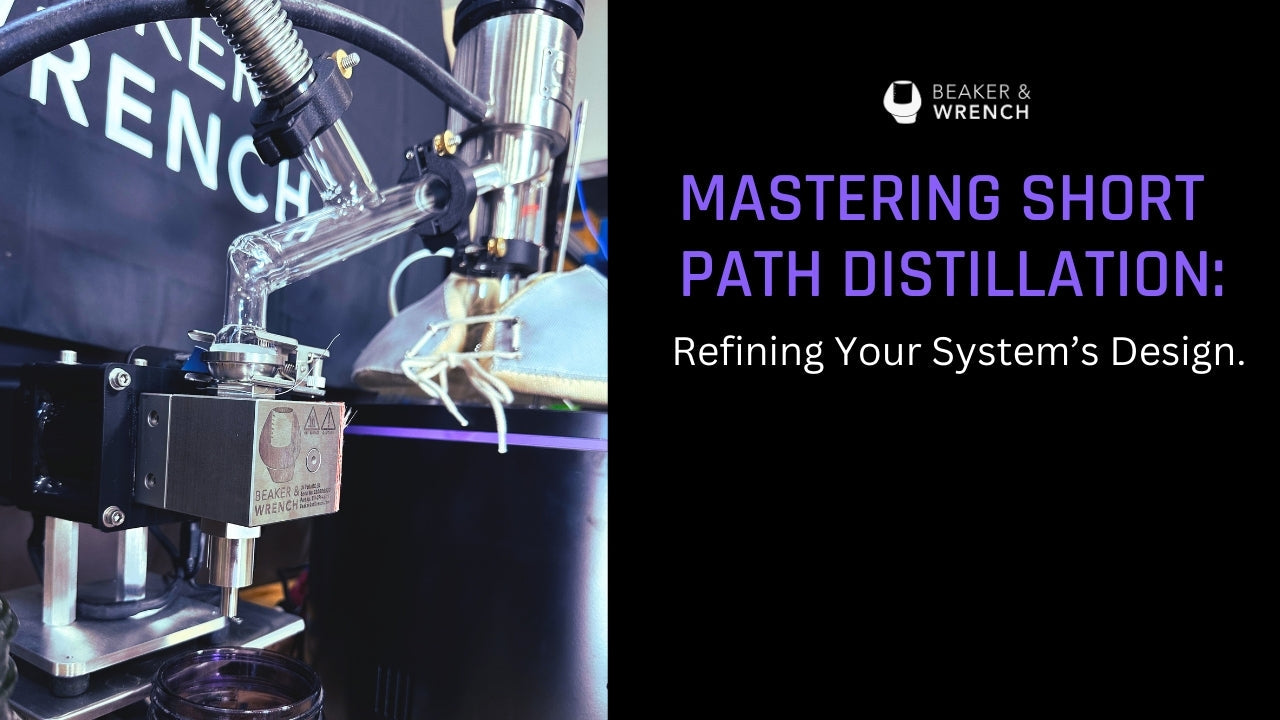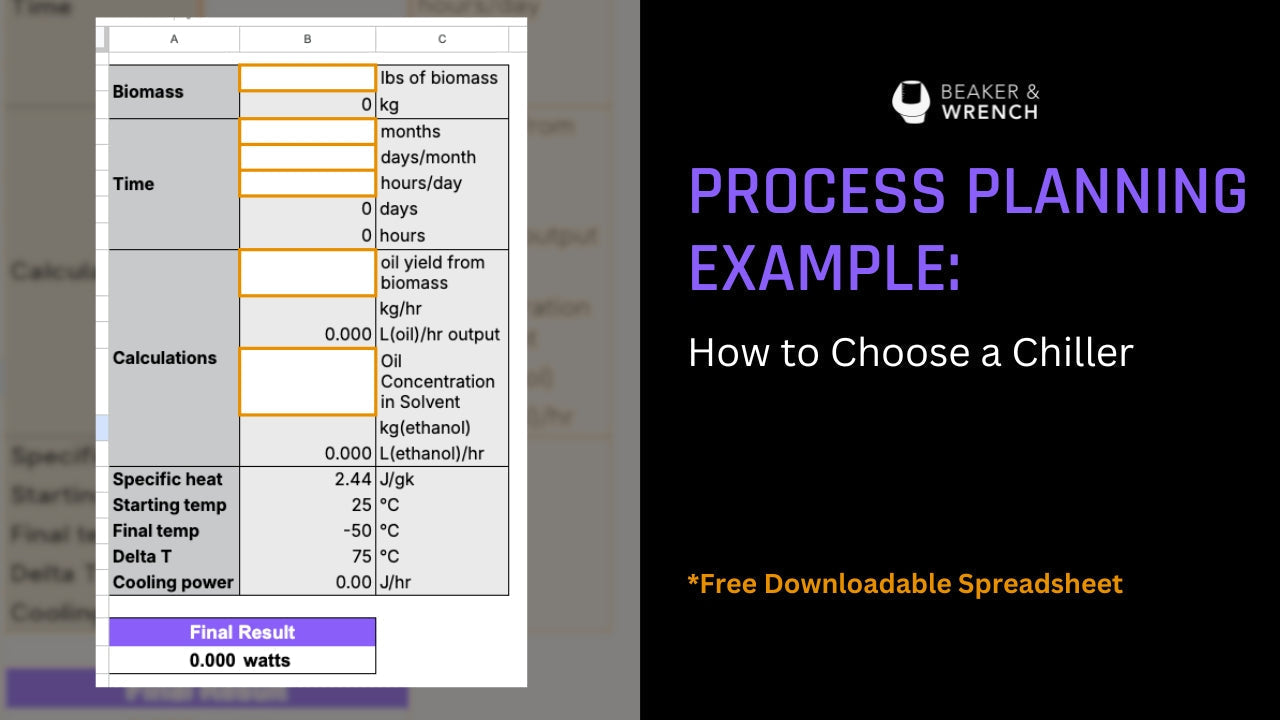In our last blog, Mastering Short Path Distillation: Refining Your Systems Design, we briefly touched on the importance of temperature control on your short path system. Temperature control is much more crucial to the process than most people think, that’s why I decided to revisit and expand on this topic.
A common struggle amongst short path distillers is long distillation times and low yields because there’s a misunderstanding of how temperature affects the process. Efficiency in your short path distillation process depends on precise temperature control. Use this blog to guide you in optimizing the temperature control on your short path distillation, ensuring faster runs and maximizing your product yield.
Understanding the Temperature in your Mantle vs. Condenser
A successful short path distillation lies in managing the relationship between your heating mantle and the head temperature. Your mantle heats the liquid, but it doesn’t directly control the mantel temperature that provides the heat or the head temperature where the actual distillation takes place. This is a crucial distinction. The mantle only senses the liquid’s temperature, and often overshoots because the mantle gets much hotter than the liquid inside, which can result in overheating, causing the mantle to smoke. Similarly, holding a specific liquid temperature without paying attention to the head temperature can cause fractions to run into one-another and cause poor separation if the head temperature is too high; or, more commonly, the distillation can stall if the head temperature is allowed to fall.
Overshooting the temperature results in wasted energy and can negatively impact the quality of your final product. However, the system’s slow response time makes precise temperature control challenging and imprecise temperature makes the process less efficient and much slower than it needs to be.
The Art of Incremental Heating: Avoiding Overshoots
Many novices adopt a “low and slow” approach. While seemingly cautious, this method often leads to excessively long distillation times—potentially 14 hours or more. The key lies in a more dynamic approach—making small, frequent adjustments to your mantle temperature. Instead of setting a target temperature and waiting for the liquid to reach it, anticipate the overshoot.
Let’s say your initial target is 150 degrees Celsius. Set the mantle to 90, the mantle will likely overshoot to 110 degrees. Instead of waiting for it to cool down, immediately adjust the mantle temperature incrementally—perhaps to 130, then 140, then 145 and finally 150. This proactive adjustment prevents the system from cooling, which saves time and prevents overheating. By continuously monitoring and subtly adjusting the mantle temperature, you’re able to match the heating rate with the system’s response. This dramatically reduces overall processing time and improves your control over the system temperature.
Reflux: The Silent Thief of Efficiency
Reflux is the return of condensed vapor to the distillation flask. It’s a significant factor that affects efficiency and overall speed. Reflux occurs on every surface that is not actively heated to above the vapor temperature. The surfaces will be heated by the condenser vapor but this requires additional energy to reheat the returned condensate, prolonging the distillation process.
To avoid reflux, maintain a consistent head temperature. The goal is a slowly yet steady temperature. If the head temperature falls even a single degree, promptly increase your mantle temperature to counteract the drop. This immediate response prevents the system from cooling off which will stall the whole process and, worse, require even more heat to warm everything back up to optimal temperature. Keeping the distillation moving with a consistent (or slowly rising) head temperature will maintain this thermal stability and prevent unnecessary energy loss and more importantly time loss.
The Terpene Transition: A Critical Stage
Short path distillation often involves processing different compounds at varying temperatures. You’ll typically start with terpenes and CO2 from decarboxylation. These volatile compounds initially assist in preheating the system. Once these have been processed, you transition to the higher-temperature distillation of cannabinoids.
The transition phase is critical. While you should reduce the heating rate during this shift and not rush to cannabinoid distillation, preventing significant temperature drops is crucial to saving hours of processing. A decrease in temperature will require you to heat up the cold glass again, slowing down the entire process. By maintaining a consistent heat throughout the transition and keeping the head temperature stable and ideally rising slightly, you maintain the distillation momentum.
Practical Strategies for Maintaining Thermal Equilibrium
Consistent temperature control requires mindful observation and quick response. Keeping the head temperature stable is very important. If you see even a single-degree drop, increase the mantle temperature by approximately two degrees. This proactive adjustment ensures that the head temperature remains stable.
This constant vigilance might seem demanding, but it’s a crucial aspect of efficient short path distillation. The time saved far outweighs the effort required. The process is not about frantic adjustments, but about subtle, anticipatory interventions. By monitoring and responding to the system’s behavior, you significantly reduce the overall run time.
Multitasking and Maintenance: The Short Path Challenge
Short path distillation also demands multitasking. Switching flasks, rotating receiving flasks, and managing fractions add complexity to the temperature control aspect. You have to juggle these tasks while maintaining a watchful eye on your head temperature.
While you don’t need superhuman multitasking skills, being present and observant is key. Between temperature adjustments, you’ll have time to make these changes. Remember, it only takes a second to rotate a flask. The goal is to minimize downtime without compromising the consistency of temperature.
Conclusion: Optimize Your Short Path Distillation
Mastering short path distillation requires a keen understanding of temperature dynamics. By focusing on precise, incremental heating, anticipating overshoots, and immediately addressing temperature drops, you can optimize your system for speed and yield. Remember: consistent monitoring, quick responses to temperature fluctuations, and proactive adjustments lead to shorter run times and superior results. With the right techniques, you can streamline your processes and enhance your output significantly.




Leave a comment
All comments are moderated before being published.
This site is protected by hCaptcha and the hCaptcha Privacy Policy and Terms of Service apply.